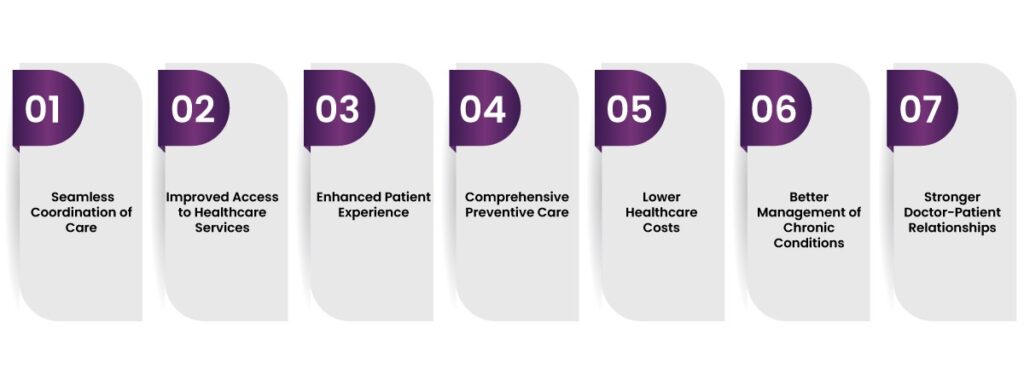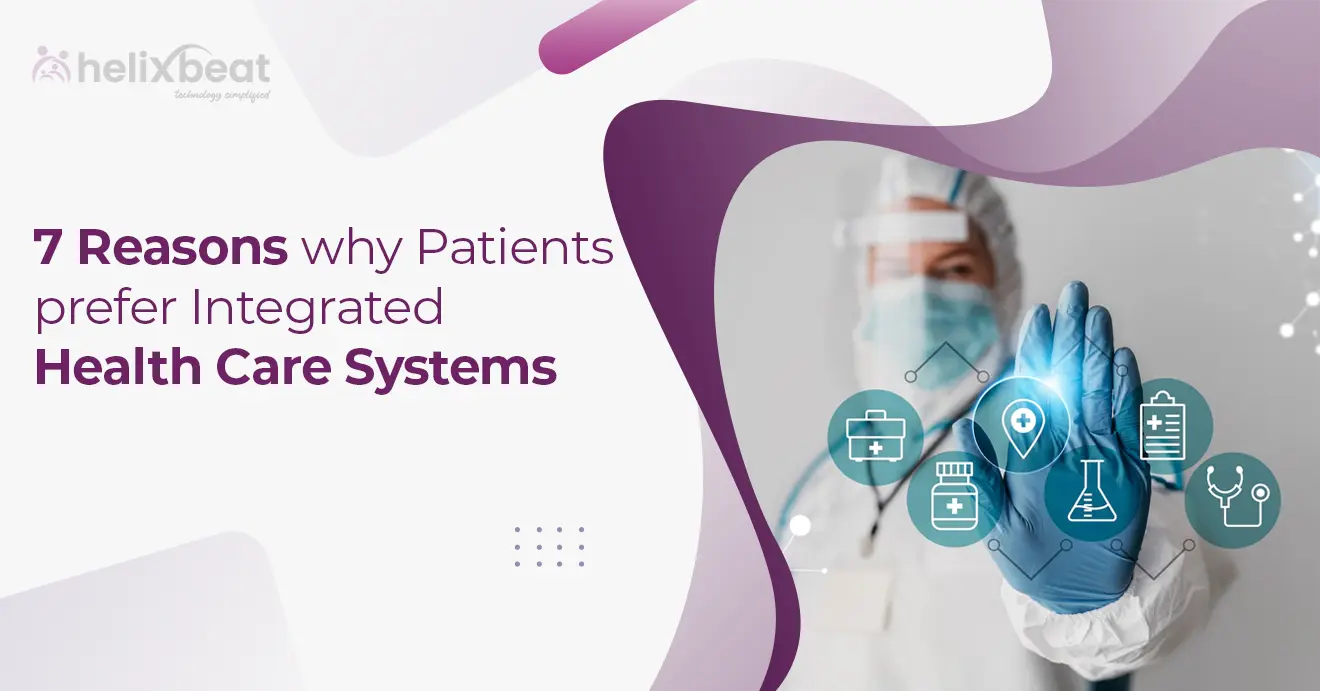Modern healthcare isn’t just about treating illnesses—it’s about delivering a seamless, patient-focused experience. No one wants to juggle multiple doctors, repeat tests unnecessarily, or struggle to access their medical records. That’s where integrated healthcare systems make a difference. Instead of operating in disconnected silos, these systems create a network where primary care, specialists, hospitals, and even social support services work together. The result? Smoother coordination, better communication, and improved health outcomes. Here are seven reasons why patients increasingly prefer integrated healthcare systems.
Table of Contents
1. Seamless Coordination of Care
One of the most frustrating aspects of traditional healthcare is the disconnect between specialists. However, integrated healthcare changes this by creating a seamless network where primary care physicians, specialists, and other healthcare professionals actively collaborate.
For example, a diabetic patient might need a primary care doctor, an endocrinologist, a nutritionist, and an ophthalmologist. With integrated systems, providers can access patient data effortlessly, so patients don’t have to share their medical history at every visit. At the same time, patients can share their records with any doctor as needed, which makes consultations more efficient and reduces the chances of miscommunication.
2. Improved Access to Healthcare Services
Many patients struggle with accessibility issues, whether due to long appointment wait times, distant healthcare facilities, or insurance limitations. However, integrated healthcare systems prioritize accessibility by offering a network of connected facilities, telemedicine options, and more.
For example, if a primary care doctor identifies a need for a specialist consultation, an integrated system allows for quicker scheduling and digital sharing of medical records. This eliminates the need for patients to manually transfer paperwork and reduces delays in receiving necessary care.
3. Enhanced Patient Experience
Patients appreciate convenience and efficiency in their healthcare journey. Integrated healthcare simplifies scheduling, billing, and medical record access. Instead of dealing with separate administrative systems at different providers, patients benefit from a unified approach where medical history, test results, and prescriptions are available in one place.
Many integrated healthcare systems also implement patient portals, allowing individuals to schedule appointments, consult doctors virtually, and access test results from their smartphones. These digital enhancements make healthcare more user-friendly and reduce the stress of managing multiple providers.
4. Comprehensive Preventive Care
Preventive healthcare is a major advantage of integrated systems. Instead of treating illnesses only after they develop, these systems emphasize early intervention, chronic disease management, and lifestyle modifications.
For example, a patient at risk of heart disease might be flagged during a routine primary care visit. With an integrated approach, they could immediately receive dietary counseling, physical therapy, and cardiac assessments—all within the same network. This proactive strategy helps patients avoid severe health complications and maintain long-term well-being.
5. Lower Healthcare Costs
Affordability is a key factor influencing a patient’s healthcare choices. Integrated healthcare helps reduce costs in multiple ways. By eliminating unnecessary tests, hospital readmissions, and redundant procedures, patients and healthcare providers alike save money.
A study published in the National Library of Medicine found that integrated healthcare systems lower medical costs and improve patient outcomes. Likewise, patients also benefit from value-based care models, where they receive high-quality treatment without unnecessary expenses.
6. Better Management of Chronic Conditions
Chronic diseases like diabetes, asthma, etc., require consistent monitoring and coordinated treatment. However, traditional healthcare models often fail to provide ongoing, holistic care for these patients, which leads to frequent hospital visits and worsening symptoms.
In an integrated healthcare setup, chronic disease patients receive continuous support. They might have access to care coordinators, remote monitoring tools, and multidisciplinary teams that work together to track progress and adjust treatment plans as needed. This comprehensive approach leads to better disease management and improved quality of life.
7. Stronger Doctor-Patient Relationships
Trust and familiarity with healthcare providers significantly impact patient satisfaction. Integrated healthcare allows patients to build lasting relationships with their care teams. Since providers work within a connected system, patients don’t have to repeatedly explain their medical history or start from scratch with each new doctor.
For example, a patient with recurring migraines may work closely with a neurologist, pain management specialist, and primary care doctor. Within an integrated system, these professionals can collaborate and provide a unified treatment plan tailored to the patient’s history. This consistency builds trust and encourages patients to stay engaged in their healthcare journey.

The Importance of Real-time Data Sharing in Integrated Healthcare
Integrated healthcare thrives on seamless collaboration between doctors, specialists, and other healthcare professionals. At the core of this system is real-time data sharing, which connects providers with up-to-the-minute patient information. In a fragmented healthcare model, a cardiologist may not immediately receive test results from a primary care physician. This disconnect forces patients to repeat their medical history or wait for records to be transferred.
However, real-time data sharing removes these bottlenecks by allowing every provider in an integrated network to access the same updated information. This is where AERIS plays a vital role. Built on globally recognized interoperability standards like HL7 and FHIR, AERIS eliminates compatibility barriers between healthcare systems. Moreover, AERIS is designed to integrate both legacy and modern systems. Its custom-built data adapters act as connectors between traditional infrastructure and cloud-based applications.
Lastly, security and regulatory compliance are also major concerns when dealing with real-time patient data. AERIS tackles this with advanced encryption, role-based access control, and transparent auditing, so sensitive information remains protected and accessible only to authorized personnel. Similarly, by maintaining a single, consolidated source of truth through Master Data Management (MDM), AERIS prevents duplicate records and errors that could otherwise compromise patient care.
Final Thoughts
As healthcare systems evolve, more organizations are adopting integrated models to enhance efficiency and deliver superior patient experiences. Platforms like AERIS bridge the gaps between disparate systems, allowing healthcare providers to deliver faster, safer, and more coordinated care.
Discover how AERIS can transform your healthcare ecosystem by enabling seamless real-time data exchange. Contact us today and schedule a free consultation.
FAQs
1. What is an integrated healthcare system?
An integrated healthcare system connects primary care providers, specialists, hospitals, and support services into a single coordinated network. This approach improves communication between healthcare professionals and makes patient care more seamless.
2. How does an integrated healthcare system improve patient care?
Integrated systems allow different healthcare providers to collaborate and share real-time patient data, reducing misdiagnoses, avoiding unnecessary tests, and streamlining treatment plans.
3. What are the benefits of real-time data sharing in healthcare?
Real-time data sharing helps doctors access up-to-date medical records instantly, leading to quicker diagnoses, fewer medical errors, and a more efficient treatment process.
4. How does integrated healthcare lower medical costs?
It eliminates redundant tests, prevents unnecessary hospital readmissions, and prioritizes preventive care—reducing long-term medical expenses for both patients and healthcare systems.
5. Why do patients prefer integrated healthcare over traditional models?
Patients prefer integrated healthcare because it simplifies scheduling, provides better access to specialists, reduces paperwork, and improves overall healthcare experiences.
6. How do integrated healthcare models strengthen doctor-patient relationships?
Since providers within an integrated system work together and have access to shared medical records, patients experience more consistent care and build long-term trust with their healthcare teams.
7. What makes AERIS a key solution for integrated healthcare?
AERIS enables seamless real-time data sharing across different healthcare platforms using globally recognized standards like HL7 and FHIR. It helps unify legacy systems with modern cloud-based applications, improving efficiency and patient care coordination.














